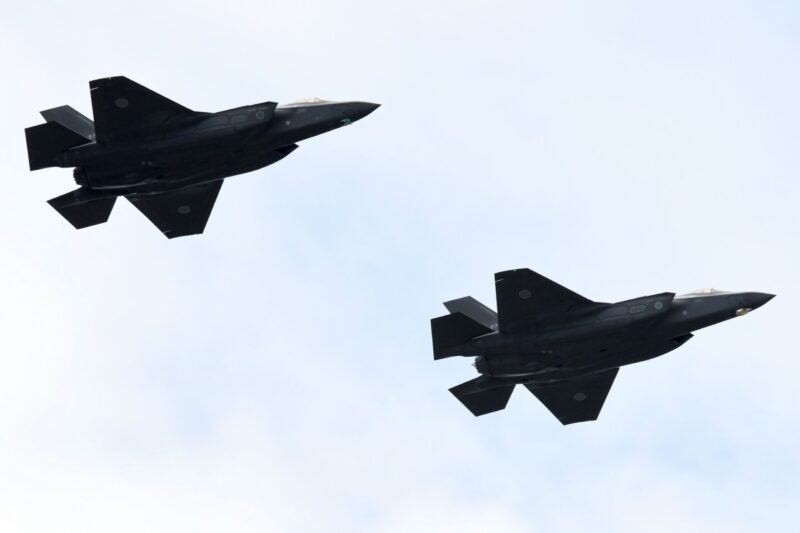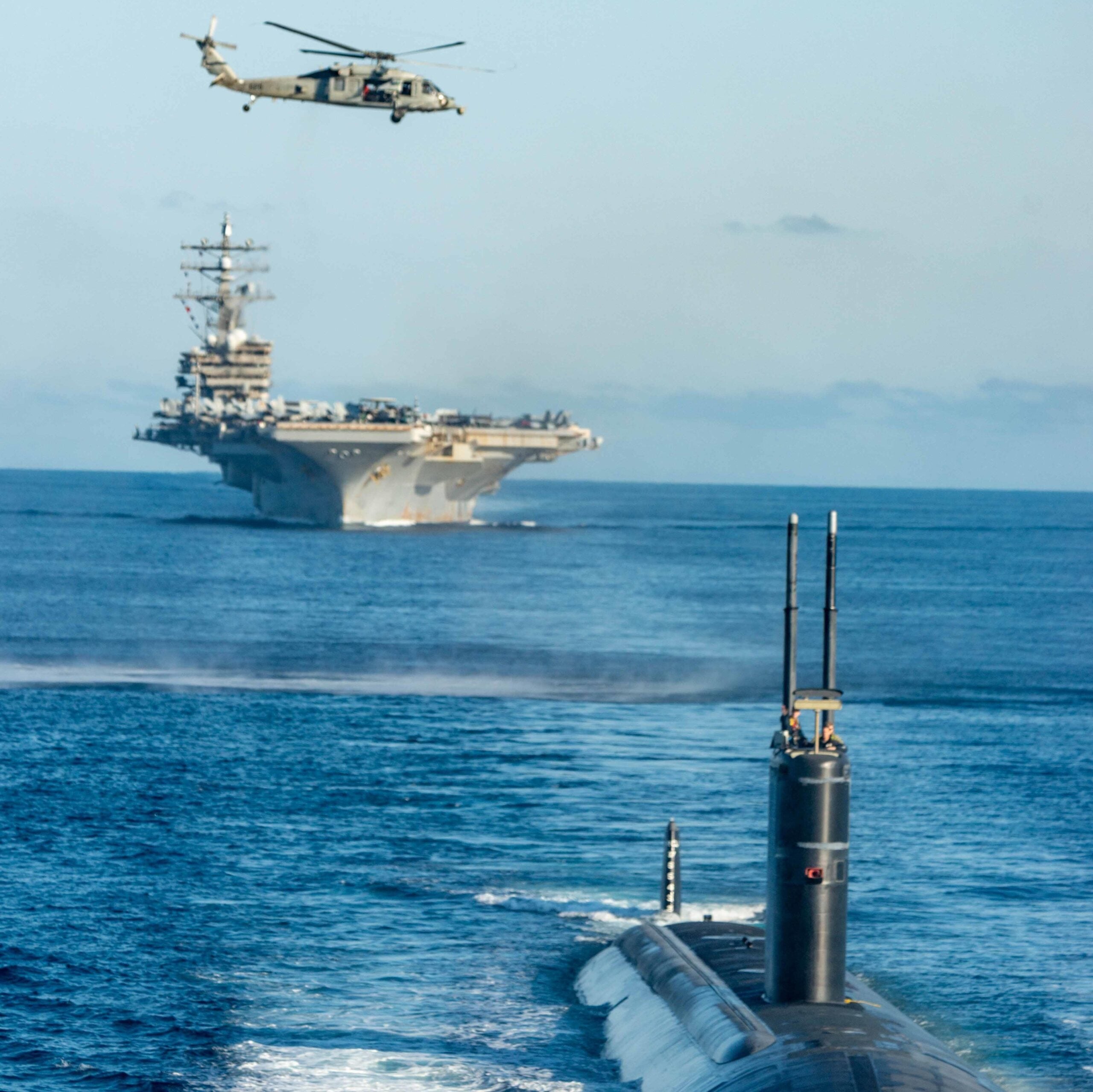
If Japan fulfils its budget goals in the next five years, the nation will go from the fifth or seventh strongest military power – in terms of firepower or defence spending respectively – to third in the world after the US and China.
Japan’s defence expenditure is anticipated to increase from $53.1bn next year to $70.4bn in 2027, reflecting a compound annual growth rate of 7.3%, according to GlobalData.
After the Cold War, Japan maintained a ‘dual hedge’, encouraging relationships with both China and the US to preserve its own autonomy. Under the post-WWII Yoshida doctrine, Japan relied primarily on the US for defence and economic support with a limited allowance to grow its own military power, capping its military spending at 1% of GDP.
That state of affairs had been held together by the Cold War balance of western allies against a Eurocentric threat. With the end of the Cold War, Tokyo sought autonomy from the US economically by increasing its trade involvement with China but chided against a deeper relationship with Beijing by tightening its military bonds with the US.
An end to Japan’s hedging
“Japan is not really hedging against dependence on the US anymore,” said Dr. Christopher Hughes, Professor of Japanese Studies and International Politics and Pro-Vice-Chancellor of the University of Warwick, in an online moderated discussion with the East-West Center, on 7 September. Japanese policy makers no longer perceive the Yoshida doctrine of economic diplomacy globally and military dependence on the United States as a tenable strategy to respond to the defence and security challenges that Japan faces today.
Yoshida did not intend for Japan to be a non-military power permanently, but prioritised economic development with military power to follow later. In a contemporary, multipolar world with regional threats, Japan’s anti-military tendencies lost support. From 2015, Tokyo’s main strategy turned back to strengthening the US-Japan bilateral alliance.

US Tariffs are shifting - will you react or anticipate?
Don’t let policy changes catch you off guard. Stay proactive with real-time data and expert analysis.
By GlobalDataA new analysis of Japan’s military trajectory, put forward by Hughes in his book Japan as a Global Military Power: New Capabilities, Alliance Integration, Bilateralism-Plus, argues Japan is responding to a challenging external security environment by becoming an “increasingly capable, reliable and – crucially – integrated US ally”.
SDF procurement for global deployment
Japan’s armed services have now moved to a multi-dimensional defence force enterprise by striving for more ability and jointness in operational ability. The modernisation effort is bringing its army, navy and air force closer together as well as venturing into new domains, including cyber operations and space.
The three services have recently made significant procurements in advanced capabilities offering the potential for global deployments. In the air domain alone, Japan introduced the Kawasaki P-1 in 2013, with 33 aircraft now in service and 60 more on order to replace the country’s P3-C fleet. Also in 2013, Japan signed a deal with Lockheed Martin for 42 F-35B aircrafts, then extended the deal in 2019 to acquire a total of 105 F-35A and 42 F-35B variants. As recently as 2020, a deal was signed with Mitsubishi Heavy Industries as the lead developer for almost 100 units of the sixth-generation F-X stealth fighter.
In the naval domain Japan is expanding its blue-water capabilities through the conversion of the Izumo-class helicopter carriers into fully-fledged aircraft carriers able to operate the F-35B fighter. Its surface fleet can field more than 40 frigates and destroyers, while subsurface assets include the capable Sōryū-class submarines.
While these represent a formidable fleet for global deployment, Tokyo is devoting many of these capabilities to homeland defence, particularly for its southwestern islands that are at risk from Chinese incursions. The Japan Self-Defense Force (JSDF) and US forces are beginning to ‘mirror’ their behaviour in island chain defence – and potentially Taiwan defence – as it becomes integrated into the overall US strategy. “Another important shift is that, if necessary, Japan may undertake some global responsibilities,” said Hughes.
International relationships and collective responsibilities

“Many past analyses are sort of still holding on to, I think, rather well outdated views of Japan’s military policy,” said Hughes. Overoptimistic partners who hope for more international cooperation are going to be disappointed if they were hoping Japan would seek greater autonomy from the US through international security cooperation arrangements.
Japan has shifted to accepting greater defensive responsibilities, including to some extent regional defence, acting through the US-Japan alliance and US security system.
But while the work Tokyo does with partners, and its expanded regional and global military cooperation is increasing in quantity, the efforts are essentially designed to reinforce the US-centric architecture for homeland defence. “Japan is becoming a global military power,” said Hughes, “but it’s very selective and it’s within these parameters.
“Japan will venture out globally. It will do more with other partners. But again, it will only do that in order to service the needs of the US-Japan alliance and to service its own homeland security.”
However tight the sphere of Japan’s concerns, in order to shore up support and reinvest in the US regional and global security system, it may have to undertake collective self-defence responsibilities. Hughes sees this as a ‘major change’ that has taken effect only since 2015.
Bilateralism Plus and ‘plug-and-play’ alliances
“We have seen a shift, I think from the old Yoshida doctrine to this new Abe doctrine and this talk about a proactive contribution to peace.”
Japan has built up many lateral security defence relationships with other nations over recent decades, with a range of new bilateral, multilateral or mini lateral relationships. Functionally, these serve as extensions of the US-Japan alliance system, using the alliance as a template to achieve integrated deterrence.
“It’s sort of ‘plug-and-play’, being able to integrate other allies into the US-Japan centred alliance system,” says Hughes.
While Japan uses the language of international contribution, essentially it is trying to strengthen its relationship with the United States.
Hughes describes this approach as ‘Bilateralism Plus’, a practice that does not mean seeking a multilateral identity or trying to de-centre from the US but does include networking and building new relationships that reinforce the existing US-Japan security relationship. “Whenever Japan has doubts about US commitment to the region or to Japan’s defence, what it does is double down,” said Hughes, establishing security arrangements with other nations that include the US in their formation, reinvesting and solidifying the original alliance.
As Prime Minister, Shinzō Abe established this as a new doctrine, deepening cooperation with the US and reducing the amount of hedging with other countries. Looking at the revised US-Japan defence guidelines, Hughes is clear that Japan is giving up on many of the hedging gains it has made inside and outside the alliance.
Potential checks on Japan’s bilateralism
In review of Hughes’s argument, Dr. Ellis Krauss, Professor Emeritus of the School of Global Policy & Strategy at the University of California San Diego, posits that Japan faces challenges to operating as a global power through the US-Japanese alliance. “Japan’s dependence economically on China may now be one of its greatest limitations, or checks, on bilateralism,” Krauss speculates that Japan’s military dependence on the US, and its capacity to act within that alliance, is kept in check by China through trade relations in the region and a need to keep a degree of good relations.
In remarks at the East-West Center discussion Hughes accepted that Japan’s relationship is complicated by their economic engagement, and that Japan seeks to make itself more ‘indispensable’ to China in key areas, including key technologies and investment. “Japan doesn’t want to decouple the way that some people in the United States talk about.”
However, he recognises that in many areas China is Japan’s ‘adversary’, particularly with respect to economic security, key supply chains, key technologies, and rare earth minerals.
Economic concerns must also be taken in context with other priorities, and it these, Hughes argues, that can ultimately force decisions. Emboldened military posturing in the Indo-Pacific provides this context. “China is now crossing red lines for Japanese national security, whether it’s Japanese territory, whether it’s Taiwan with its sea lanes. It’s actually undermining potentially the entire US security system, the region. This is pretty existential now for Japan.”



